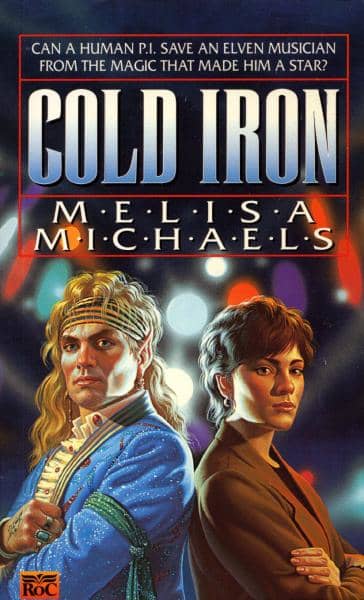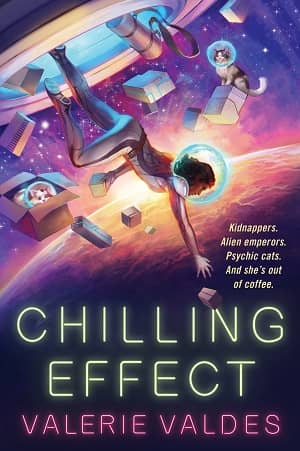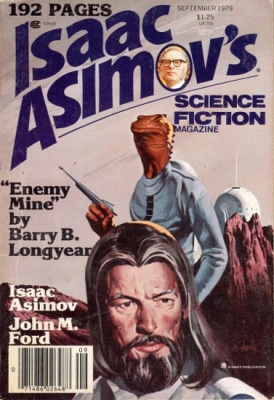Vintage Treasures: Cold Iron and Sister to the Rain by Melisa Michaels
 |
 |
I was preparing a Vintage Treasures article on Melisa Michaels on Saturday, and particularly her two-volume urban fantasy series featuring private eye Rosie Levine, Cold Iron (1997) and Sister to the Rain (1998), when I stumbled on this disturbing Facebook post by Rich Horton:
I have just learned that Melisa Michaels has died. I knew she had cancer, and she had recently reported that there wasn’t much more to be done, but it’s still sad news, and it seems to have come more quickly than she thought.
But I wanted to celebrate her — she was one of the first people to, as it were, welcome me to the SF community, when I first went online, and when I joined SFF Net. We had many great conversations (online) about SF and other matters. She is one of the people I really owe a debt to for helping me make friends in this field.
I read her novels, the Skyrider SF series and the Rosie Levine Fantasy/Mystery series, with much enjoyment… Melisa always made tremendous contributions to SFWA — as I recall, she was the first webmaster of the SFWA web page, right at the dawning of the WWW. I didn’t keep close track of her later on, especially after the demise of SFF Net, but we had reconnected to a small degree on Facebook. I offer condolences to her family, and I celebrate a life well-lived.
I didn’t know Melisa the way Rich did, but I was still very saddened by the news. And I thought we could help celebrate her life here by showcasing her novels. Rich discussed Cold Iron when it first appeared over 20 years ago; here’s an excerpt from the review at his website, Strange at Ecbatan.
 On Monday, July 22, I was back at the Hall Theatre for one of the movies I was most anticipating. It was a new live-action manga adaptation from Hideki Takeuchi, director of the
On Monday, July 22, I was back at the Hall Theatre for one of the movies I was most anticipating. It was a new live-action manga adaptation from Hideki Takeuchi, director of the 

 My last screening of July 21 brought me back to the De Sève Theatre for a showcase of animated short genre films from China, Taiwan, Korea, and Japan, a grouping titled “Things That Go Bump In the East.” 11 films in a range of visual styles promised variety. I’d been having good luck with short films at the festival so far, and settled in eager to see what would come now.
My last screening of July 21 brought me back to the De Sève Theatre for a showcase of animated short genre films from China, Taiwan, Korea, and Japan, a grouping titled “Things That Go Bump In the East.” 11 films in a range of visual styles promised variety. I’d been having good luck with short films at the festival so far, and settled in eager to see what would come now.
 For my third movie of July 21 I wandered back to the Fantasia screening room. There, I settled in with a movie from the Philippines: Ode To Nothing. Written and directed by Dwein Ruedas Baltazar, it follows Sonya (Marietta Subong), a woman no longer young who owns her own funeral home in an unnamed town. Alone except for her father, Rudy (Joonee Gamboa), Sonya tries to keep the funeral home going despite debts to local loan shark Theodore (Dido Dela Paz). Then a body is brought to her for burial under suspicious circumstances. Rather than bury the corpse, though, Sonya begins to speak to it, and comes to think that the body of the old woman is bringing her luck — even to treat the body as her surrogate mother. Is the corpse responsible for the sudden influx of business to the funeral home? And even if it is, can you trust the gifts of the dead?
For my third movie of July 21 I wandered back to the Fantasia screening room. There, I settled in with a movie from the Philippines: Ode To Nothing. Written and directed by Dwein Ruedas Baltazar, it follows Sonya (Marietta Subong), a woman no longer young who owns her own funeral home in an unnamed town. Alone except for her father, Rudy (Joonee Gamboa), Sonya tries to keep the funeral home going despite debts to local loan shark Theodore (Dido Dela Paz). Then a body is brought to her for burial under suspicious circumstances. Rather than bury the corpse, though, Sonya begins to speak to it, and comes to think that the body of the old woman is bringing her luck — even to treat the body as her surrogate mother. Is the corpse responsible for the sudden influx of business to the funeral home? And even if it is, can you trust the gifts of the dead?

